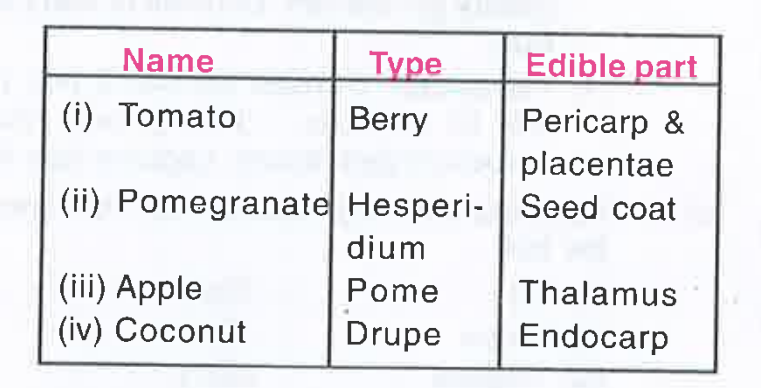Read the following matches
(i) Parkinsonia - Phyllodes
(ii) Utricularia - Leaf bladder
(iii) Aloe - Succulent leaves
(iv) Opuntia- Tendril
Which of these are correct ?
(i), (ii) and (iii)
(ii), (iii) and (iv)
(i), (iii) and (iv)
All are correct.
The correct Answer is:A
To solve the question, we need to analyze each match provided and determine if they are correct or not. Let's go through them one by one:
1. Parkinsonia - Phyllodes:
- Phyllodes are modifications of the petiole (the stalk that attaches the leaf blade to the stem) that take on the appearance and function of leaves. In Parkinsonia, the leaves are reduced, and the phyllodes perform photosynthesis.
- Conclusion: This match is correct.
2. Utricularia - Leaf bladder:
- Utricularia, commonly known as bladderwort, has specialized structures called bladders that trap small aquatic organisms. These bladders are modified leaves that function in capturing prey.
- Conclusion: This match is correct.
3. Aloe - Succulent leaves:
- Aloe plants have thick, fleshy leaves that are adapted to store water, making them succulent. This adaptation is crucial for survival in arid environments.
- Conclusion: This match is correct.
4. Opuntia - Tendril:
- Opuntia, or prickly pear, does not have tendrils. Instead, it has modified stems called phylloclades, which are flattened and perform photosynthesis.
- Conclusion: This match is incorrect.
Now that we have analyzed all the matches, we can summarize our findings:
- Correct matches: Parkinsonia - Phyllodes, Utricularia - Leaf bladder, Aloe - Succulent leaves
- Incorrect match: Opuntia - Tendril
Thus, the correct options are 1, 2, and 3.
Final Answer: The correct matches are 1, 2, and 3 (Option 1).
---
- Phyllodes are modifications of the petiole (the stalk that attaches the leaf blade to the stem) that take on the appearance and function of leaves. In Parkinsonia, the leaves are reduced, and the phyllodes perform photosynthesis.
- Conclusion: This match is correct.
- Utricularia, commonly known as bladderwort, has specialized structures called bladders that trap small aquatic organisms. These bladders are modified leaves that function in capturing prey.
- Conclusion: This match is correct.
- Aloe plants have thick, fleshy leaves that are adapted to store water, making them succulent. This adaptation is crucial for survival in arid environments.
- Conclusion: This match is correct.
- Opuntia, or prickly pear, does not have tendrils. Instead, it has modified stems called phylloclades, which are flattened and perform photosynthesis.
- Conclusion: This match is incorrect.
- Incorrect match: Opuntia - Tendril
Topper's Solved these Questions
Similar Questions
Read the following matches
(i) Guava - Spiral phyllotaxy
(ii) Ruscus - Cladode
(iii) Opuntia - Phylloclades
(iv) Mustard - Spiral phyllotaxy
Which of these are correct ?
View SolutionRead the following matches
(i) Salvia - Didynamous stamen
(ii) China Rose - Monoadelphous
(iii) Citrus - Polyadelphous
(iv) Candytuft - Umbel
Which of these are correct ?
View SolutionGo through the following matches :
(i) Poinsettia - Cyathium
(ii) Ocimum sandctum - Cyathium
(iii) Salvia - Verticillaster
(iv) Fig - Verticillaster
Which of these are correct ?
View SolutionRead the following matches regarding the placentation
(i) Primrose - Free central
(ii) Pea - Marginal
(iii) Marigold - Basal
(iv) Mustard - Axile
Which of these are correct ?
View SolutionRead the following matches regarding the placentation
(i) Argemone - Axile
(ii) China rose - Free central
(iii) Lemon - Axile
(iv) Mustard - Parietal
Which of these are correct ?
View SolutionGo through the following matches
(i) Wild strawberry - Stolon
(ii) Eichhornia - Offset
(iii) Chrysanthemum- Twiner
(iv) Pine apple - Offset
Which of these are correct ?
View SolutionGo through the following matches
(i) Auxins - Tryptophan
(ii) Ethylene - Mevalonic acid
(iii) Gibberellins - Methionine
(iv) Cytokinis - Aminopurines
Which of these are correct
View SolutionRead the following matches
(i) Lily - Compound tunciated bulb
(ii) Potato - Tuber
(iii) Allium cepa - Simple tunicated bulb
(iv) Allium sativum - Scaly bulb
Which of these are correct ?
View SolutionGo through the following matches regarding the flower
(i) Mustard - Epigynous
(ii) Plum - Perigynous
(iii) Hibiscus - Epigynous
(iv) Peach - Perigynous
Which of these are correct ?
View SolutionRead the following matches regarding the fruits

Which of these are correct ?
View Solution
